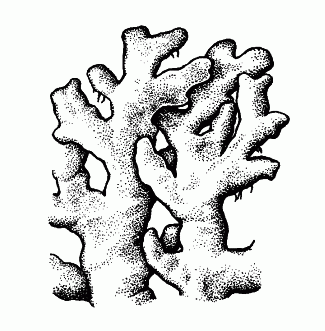Arctoparmelia centrifuga (L.) Hale
Rippled ring
Parmeliaceae
Introduction to the Lichens
Rippled ring
Parmeliaceae
Introduction to the Lichens
Map
Distribution of Arctoparmelia centrifuga unavailable
Species Information
General:
Medium to large stratified foliose lichens, corticate above and below, sorediate or not, lobes closely appressed, elongate, averaging to 0.3–0.5 mm wide, thin. Upper surface pale yellowish green, dull. Lower surface pale to black, apparently white-pruinose, bearing scattered, short, simple rhizines. Medulla white. Photobiont green. Apothecia located over upper surface, disc brown; spores simple, ellipsoid, colourless, 8 per ascus. Over acid rock in arctic-alpine to boreal localities.
Notes: Arctoparmelia consists of four species worldwide, all of which occur in B.C. For points of distinction with similar species in other genera, see the descriptions under Xanthoparmelia.
Species description:
Thallus lacking soredia AND Upper cortex firm, never eroding; lobe tips only rarely downturned AND Lower surface whitish or tan throughout; widespread
Reactions:
Cortex K+ pale yellow, KC+ yellow; medulla C+ slowly yellow, KC+ reddish.
Contents:
Alectoronic acid, atranorin and usnic acid.
Source: Lichens of British Columbia
Illustration

If more than one illustration is available for a species (e.g., separate illustrations were provided for two subspecies) then links to the separate images will be provided below. Note that individual subspecies or varietal illustrations are not always available.
Illustration By: Trevor Goward
Habitat and Range
Habitat: Frequent over acid or somewhat base-rich rock in open inland sites, especially in boulderbedsWorld Distribution: circumpolar, S to OR.
Source: Lichens of British Columbia
Status Information
Synonyms
Synonyms and Alternate Names:
Arctoparmelia aleuritica (Nyl.) Hale
Parmelia aleuritica Nyl.
Parmelia centrifuga
Xanthoparmelia centrifuga (L.) Hale